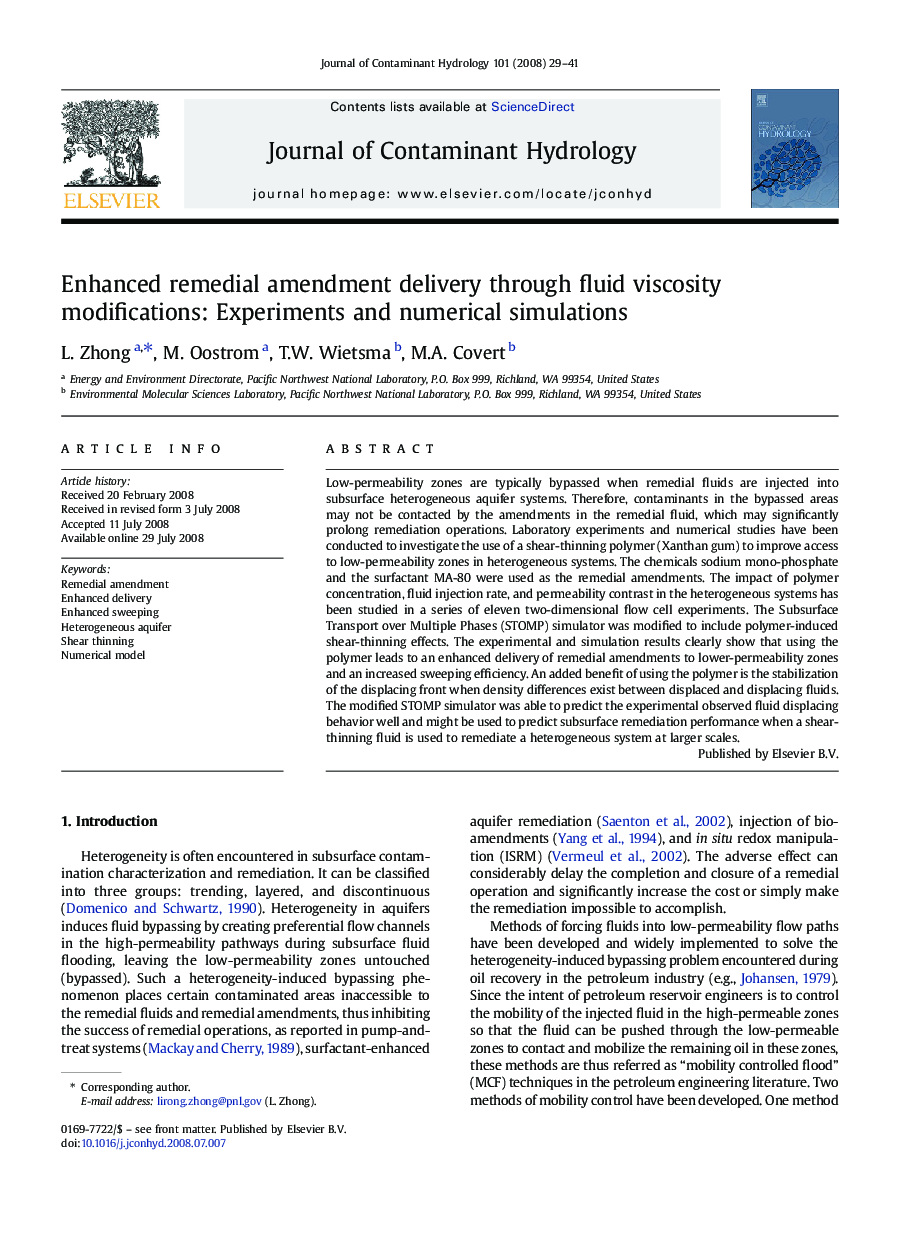| Article ID | Journal | Published Year | Pages | File Type |
|---|---|---|---|---|
| 4547378 | Journal of Contaminant Hydrology | 2008 | 13 Pages |
Low-permeability zones are typically bypassed when remedial fluids are injected into subsurface heterogeneous aquifer systems. Therefore, contaminants in the bypassed areas may not be contacted by the amendments in the remedial fluid, which may significantly prolong remediation operations. Laboratory experiments and numerical studies have been conducted to investigate the use of a shear-thinning polymer (Xanthan gum) to improve access to low-permeability zones in heterogeneous systems. The chemicals sodium mono-phosphate and the surfactant MA-80 were used as the remedial amendments. The impact of polymer concentration, fluid injection rate, and permeability contrast in the heterogeneous systems has been studied in a series of eleven two-dimensional flow cell experiments. The Subsurface Transport over Multiple Phases (STOMP) simulator was modified to include polymer-induced shear-thinning effects. The experimental and simulation results clearly show that using the polymer leads to an enhanced delivery of remedial amendments to lower-permeability zones and an increased sweeping efficiency. An added benefit of using the polymer is the stabilization of the displacing front when density differences exist between displaced and displacing fluids. The modified STOMP simulator was able to predict the experimental observed fluid displacing behavior well and might be used to predict subsurface remediation performance when a shear-thinning fluid is used to remediate a heterogeneous system at larger scales.
